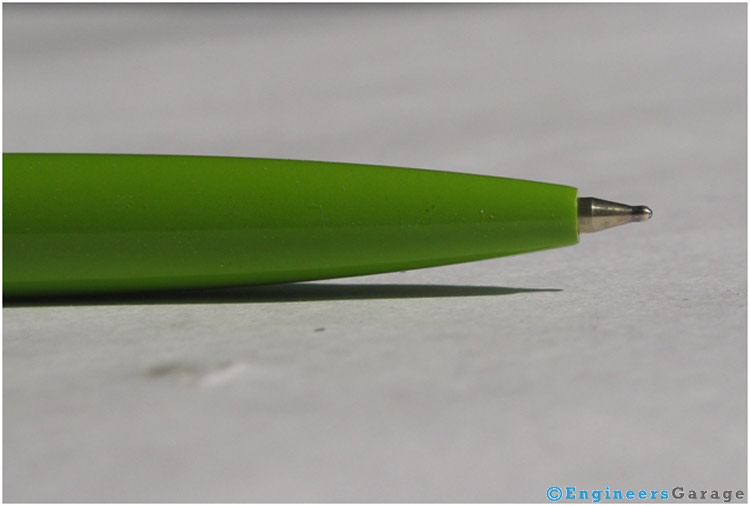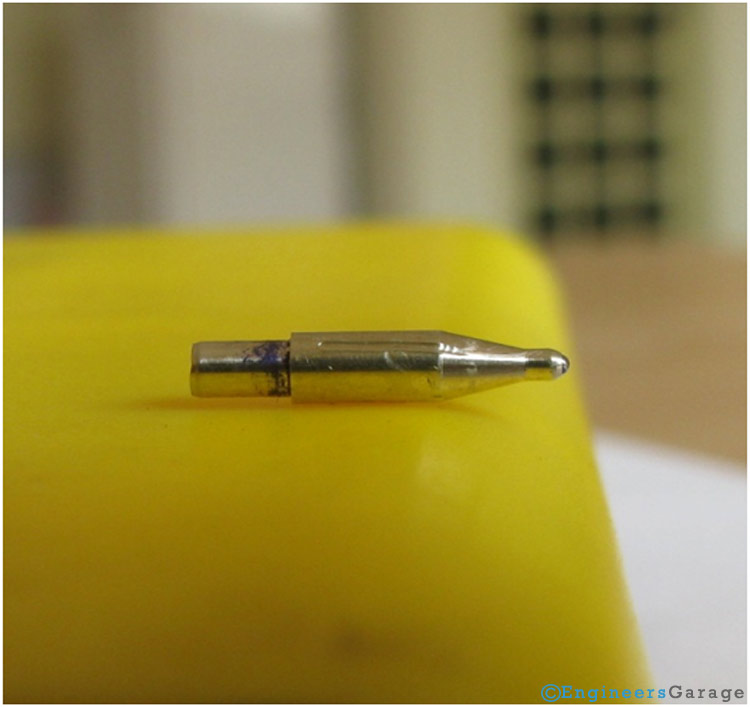The history of ball pen dates back to 1880s. It was John Loud who received the first patent on Ball pen. Technically speaking ball pen is a device, which when rubbed on a paper leaves a permanent continuous colored mark following the direction of the motion. Ball pens are available in various size, shapes, colors and prices varying from almost a few cents to few hundred dollars and even more. Researchers have been working continuously to improve the performance of the pens. Some important performance parameters include the grip, the tip of the pen and controlling the ink flow for longer life.

Fig. 1: Image of Outer Body of Ball Pen
Manufacturers produce ball pen in different shape, size and color. A plastic or a metal casing encapsulates the entire assembly. The tip of the pen is kept inside the outer casing by means of mechanical arrangements when it is not used. Broadly classifying the ball pens are available in two forms disposable or reusable. Disposable pens are very cheap made up of plastic which cannot be used for writing purpose once the ink is over. On the other hand reusable pens can be used again and again by changing the ink reservoir called the refill.
Internal Body & Mechanical Lock

Fig. 2: Layout and Structure of Ball Pen
On removing the top metal case, we can have the first glimpse of the internal structure of the pen. A hollow metallic tube is attached with the bottom metallic casing of the Ball pen. The ink reservoir also called the refill with a blue colored plastic cap is placed inside the metal cylinder. The metal tube has dents on its surface which gets hooked with the internal structure of the top metal casing.
Mechanical Lock

Fig. 3: Image showing Mechanical Lock System of Ball Pen
Inside this metal structure is a mechanical lock made up of plastic as shown in the image above. This lock has two half. The bottom half glued to the bottom metallic casing has a path cut out in its structure in the form of a vertical spiral. The top half pasted to the metal tube grips the refill at one end and has a knob at the other end which fixes itself in the vertical spiral path of the bottom half.
When the pen is to be used for writing, the top metallic body is rotated in clockwise direction. As a result of which the tip of the pen comes out and vice versa. This happens because on rotation the plastic knob starts moving in the vertical direction along the spiral path and hence the refill which is being gripped by the top half of the lock moves down.
This is one of the mechanism, some pens use the spring loaded push to on mechanism for the same purpose. Other may not have any mechanical motion rather a cap which covers the tip.
Cartage/Refill & Tip

Fig. 4: Ink Cartage or Refill of Pen
The above image shows the ink cartage (refill) which stores the ink. The Ink is a viscous liquid available in different colors which flow down due to the gravitational force. Another important property of this viscous liquid is it dries out very fast. Choosing the right viscosity is very important. Ink with small viscosity is likely to cause leakage problems, whereas with very high viscosity may not flow out properly.

Fig. 5: Image of Tip of Ball Pen
The above image shows the tip of the ball point pen. Different technologies have been developed and are used to increase the efficiency and avoid the problems like leakages etc. At the bottom most is a very small ball made up of brass steel or tungsten carbide. The ball is free to rotate and is placed in a socket inside the tip. The socket has a mechanical stop to avoid the ball to either go inside or come out. The ball rotates due to the friction between its surface and the paper. When the pen is rolled over a paper, the ball rotates and the viscous ink flows out due to gravitational force.
Ball Bearing

Fig. 6: Tip of Ball Pen Resembling Human Eye
The front view of the tip resembles the human eye in appearance. The small gap allows rotation of the ball bearing and proper flow of ink. The surface of the ball is slightly rough. The ink is not stable on the surface of a sphere and hence some ink sticks to it as can be seen in the image as well. The diameter of the ball is of the order of a few mm or less. At such small size capillary action is dominant. It is gravity and capillary action which forces the ink to flow out from the pen to the paper. In some of the mechanism, the ball has a spring at the back side. When the ball rotates it presses the spring, the spring which is connected to a lever opens up a small vent and the ink flows down.
Filed Under: Insight


Questions related to this article?
👉Ask and discuss on EDAboard.com and Electro-Tech-Online.com forums.
Tell Us What You Think!!
You must be logged in to post a comment.